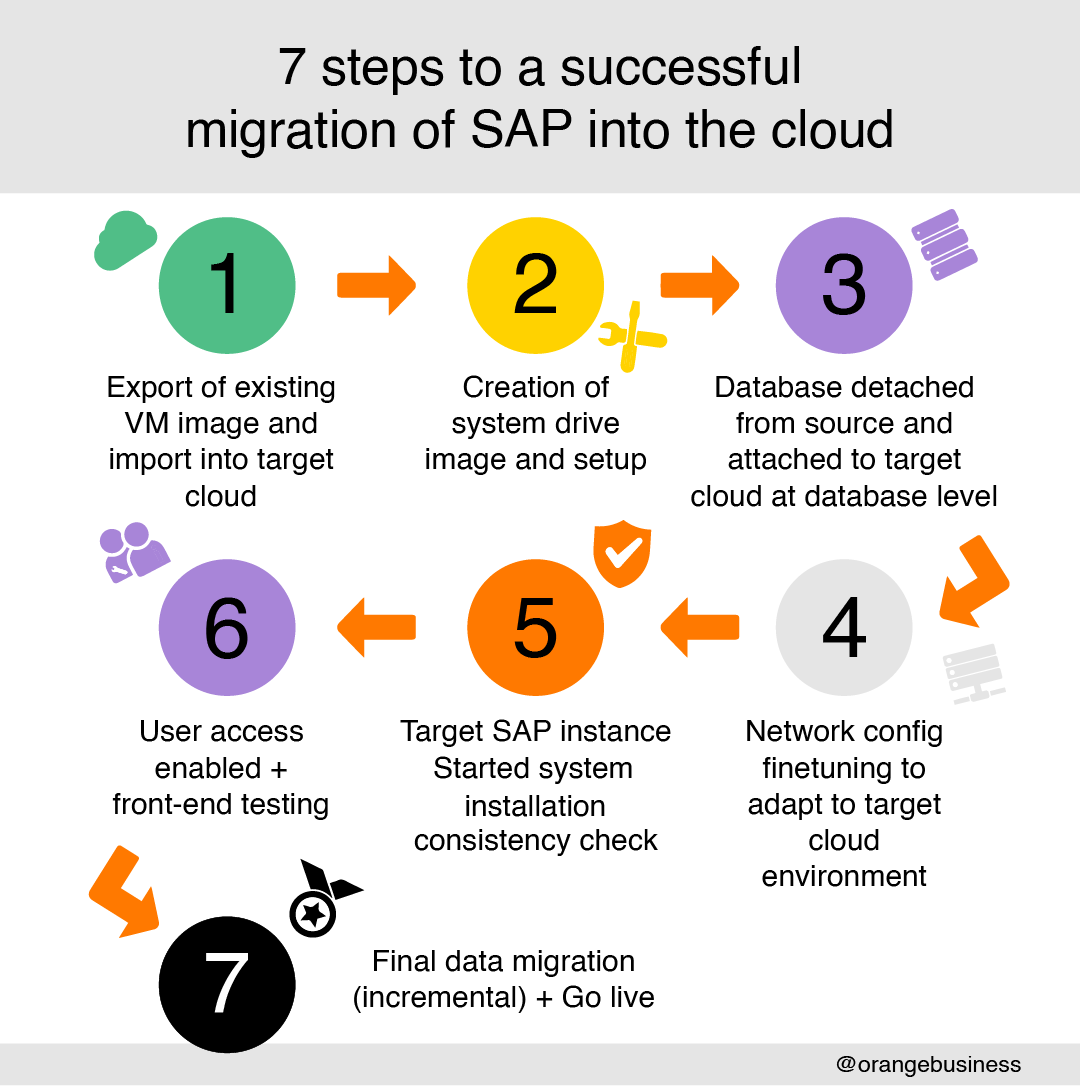
I have been practicing SAP cloud migration projects for a long time. Let me take you through a recent customer business case in Asia Pacific, to describe our step-by-step methodology for a successful migration of SAP from a public cloud to another cloud platform and how our customer, a prominent international manufacturer, derived significant benefits from the migration.
Data and SAP at the heart of the business
Our customer is a large international FMCG manufacturer with a significant presence in the Asia Pacific region whose name we cannot quote for reasons of confidentiality. They are using data extensively to drive innovation at all levels of their business. In that context, SAP is central to their finance, logistics and HR operations.
As they moved their offices, they had to face many challenges in terms of connectivity and data management, which were potentially detrimental to their core business.
Their SAP environment was hosted on a public cloud with a static environment, which made it possible for the infrastructure to adapt neither to their transactional needs nor data growth. It’s a classic issue with ERP infrastructures, be they hosted or on-premises. A lack of forward thinking about the future scalability of an ERP environment often leads to a deadlock when push comes to shove.

Issues related to the initial SAP configuration
This wasn't by far the only pain point encountered by our customer. They were facing issues with the platform’s admin access. Besides, a lack of transparency of the initial service catalog and the absence of support when they needed it mostly led to delays in the roll-out of SAP support packs.
Our customer then decided to move to a more bespoke solution, encompassing the right-sizing of its existing SAP landscape and supporting 10% data growth per year. As far as backups were concerned, we suggested a three-tier solution — covering VMs, database and SAP environments. Such a choice added significant granularity and made it possible to resume the system from either of these three environments, depending on where the problem initially occurred.
SAP cloud migration prerequisites
The best approach is to perform such a migration at VM level with additional SAP Basis activities at OS/ DB & SAP level. This option was the best way to adapt to the shortening of the program schedule, which was caused by unforeseen events.
We started with the audit of the existing SAP instances and then analyzed the data growth as well as the transactional growth per user, peak utilization schedule per year and maximum resource utilization by SAP transactional activities during month-end, quarter-end and year-end. Then we added a 20% buffer to the sizing for compute and memory as well as 30% additional sizing for storage, this is based on historical data of resource utilization per year and factored for a three-year storage.
We then proceeded to migrate the SAP QA instance at VM level. Quality Assurance is indeed critical with regards to the implementation of SAP projects.
7 steps to the migration of SAP into the cloud
From then on, we implemented a step-by-step approach to the transition of our customer's SAP environment into our cloud. Here is how we proceeded:
- To start with, we exported the existing VM image from the source cloud and then imported it to the Orange cloud. This stage was seamless, as it enabled the source instance of SAP to run while a new copy was installed on the target cloud VM.
- Secondly, we created the system dive image at OS level before data configuration.
- Thirdly, we detached the database instance, updated the new SAP host details and re-attached it to the target cloud at database level, therefore ensuring the complete migration of the entire environment necessary to the proper execution of the database on the target environment.
- Fourthly, we fine-tuned the network configuration of SAP to adapt it to the target cloud environment. Such changes must be done both at the hosting and application levels as there are always discrepancies between cloud providers. Such a configuration change makes it possible for network handling optimization on the new network.
- We then proceeded to start the SAP instance on the target cloud. We subsequently launched a system installation consistency check, which confirmed that all the instances of SAP were running correctly. This phase also ensured that the database was suitably linked to the target SAP environment and that the system was using the right data from the right place.
- Phase 6 of our methodology consisted of enabling user access and hand over to end users for front-end testing. Once the back-end is working reliably — stage 5 of our approach — one can indeed let SAP end users test the functional workflow and ensure that everything works well at their end.
- Lastly, the Go Live phase. We migrated all the data created since the beginning of the migration to ensure that the data set was complete and up to date and rolled out the system.
Outcome and client benefits
Throughout this project, we supported our client with VM Image creation, source system transfer and data migration. We made sure the end-user connectivity to the SAP production instance from three locations, Singapore, South Korea and Japan, were up and running and tested adequately.
As to transaction and back-up data growth, we recommended a five-year cloud storage plan in compliance with regulations. The target solution ended up being cheaper than its original set-up.
We achieved all these results despite a very tight schedule, and we followed a parallel transition model to ensure business continuity for the month-end financial activities without disruption.
Regardless of all the constraints we had to face, the complete SAP landscape was migrated within eight days, when this type of project normally requires twenty days.
Read more
- The cloud, service included – How Kerlink successfully deployed an IoT platform avoiding vendor lock-in
- The cloud, service included – Achieving a successful three-step cloud migration
- The cloud, service included – How to shape a cloud-based IT security strategy?
- The cloud, the new business continuity challenge
- DRP in a managed private cloud: a case study

Debashish Mahapatra is Director of SAP Practice, APAC for Professional Services at Orange Business. Based in Singapore, he is a highly experienced certified professional specializing in SAP, with over two decades of experience in SAP consulting and multi-cloud transformations for customers across various regions. In his free time, Debashish loves gardening, traveling to the countryside and spending time with nature.